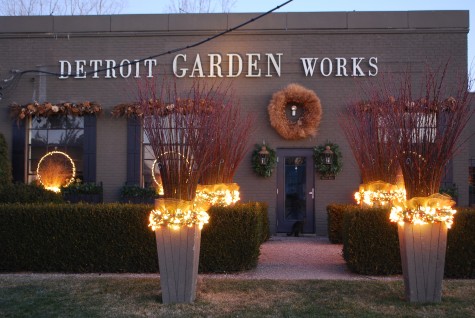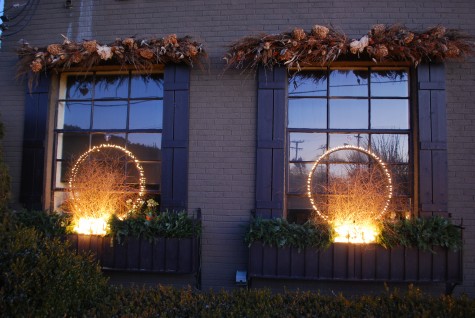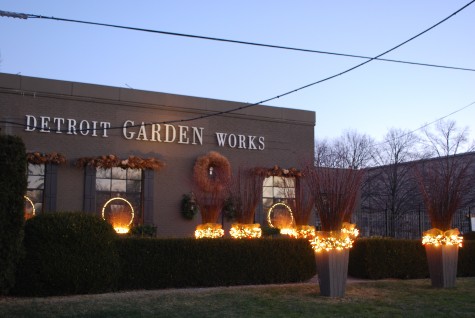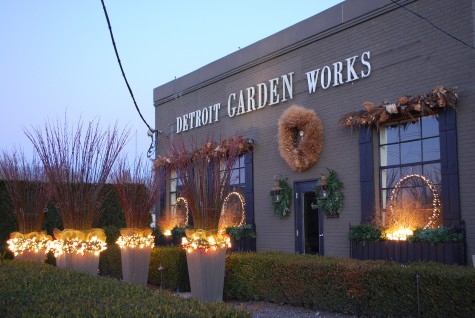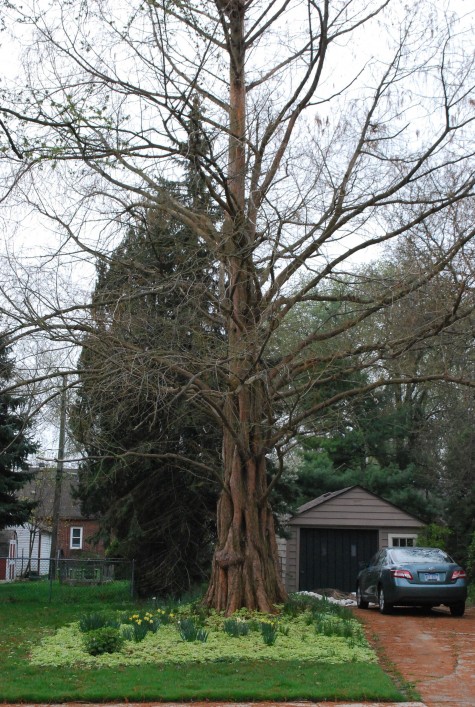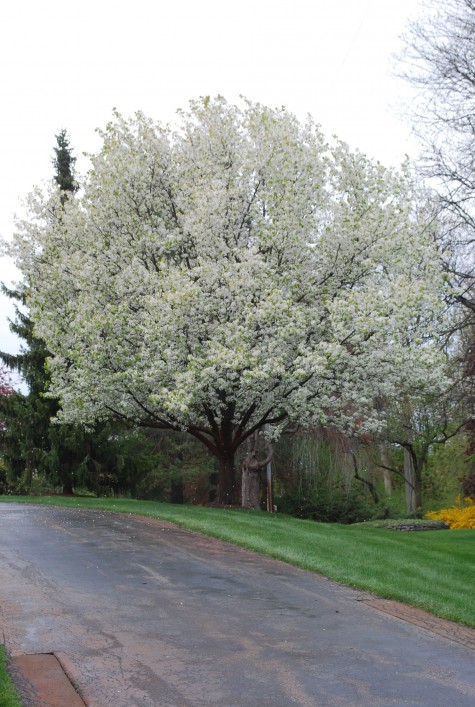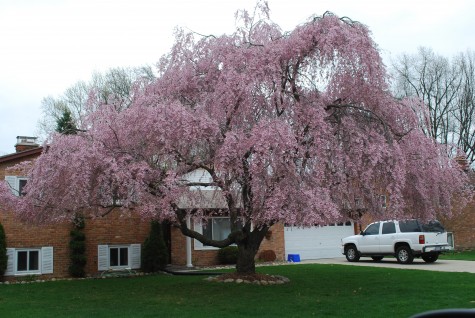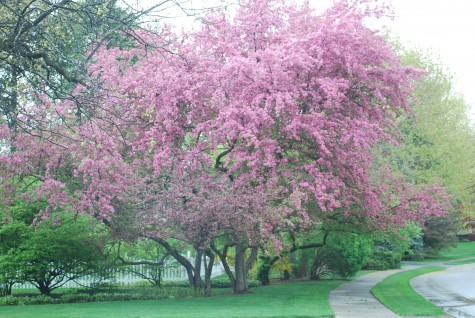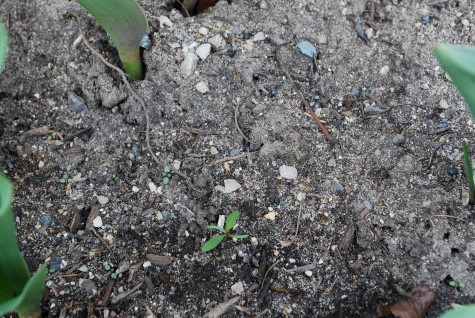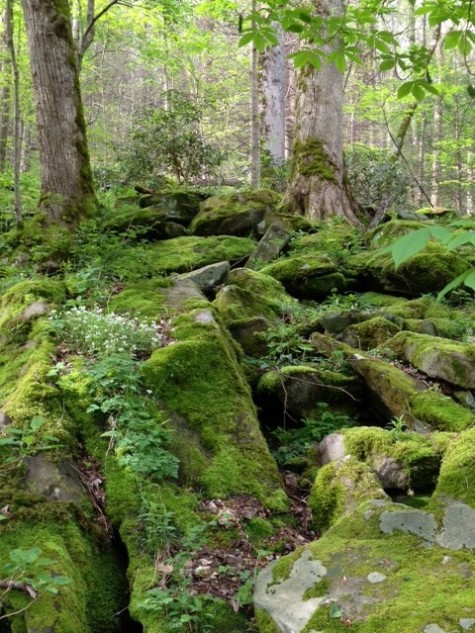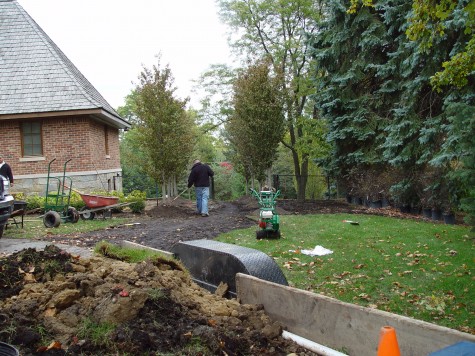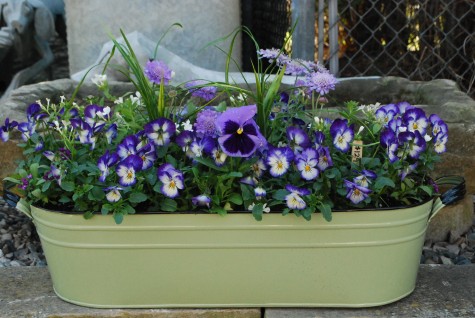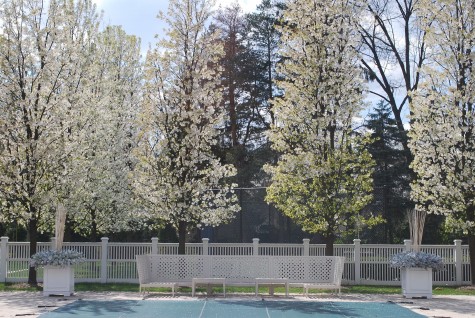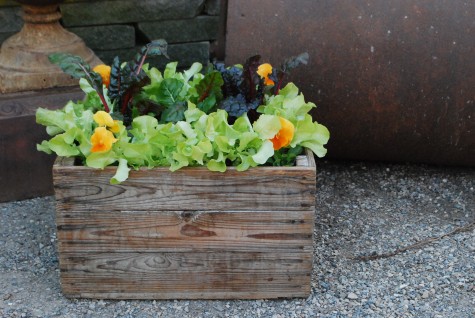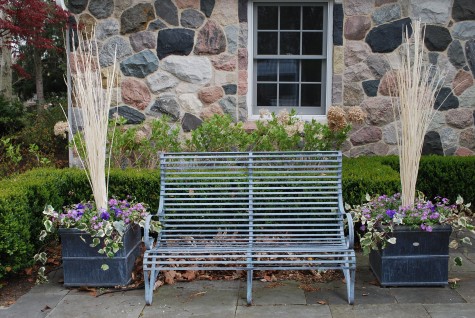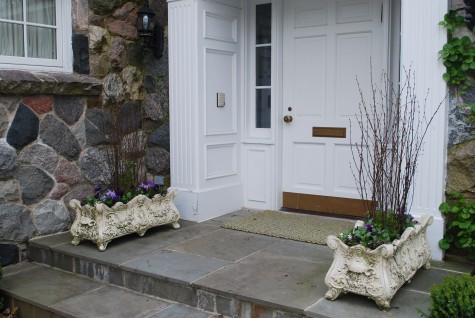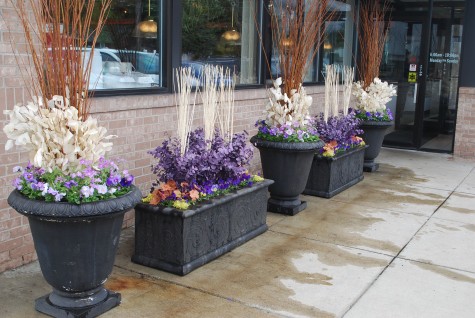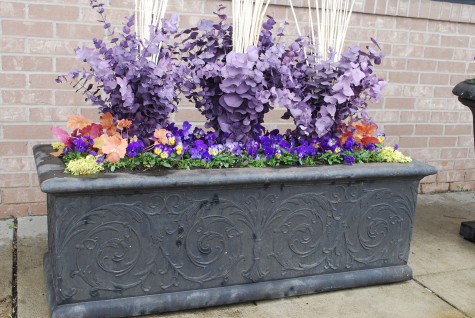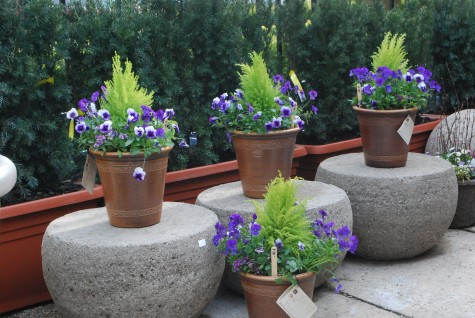At the end of the first week of January, I reluctantly took the Christmas light garlands draped around these pots down, and put them in storage. After all, the holidays were over. This year I was especially reluctant for the holiday season to end-we had had no snow. Though the temperature was chilly, we were denied that one ingredient that in my mind makes for Christmas-the snow.
This photograph with all of the lights blazing taken just before Christmas does seem to lack that special seasonal element-does it not? I felt we were so ready for the snow-that snow that never came.
Winters in Michigan are notable for their grey skies, and their abundance of snow. For whatever reason, our clouds were dry as dust. It looked for all the world like we had the heat up much too high-and unnecessarily. We designed a winter display based on the norm for our winters. The norm went into hiding.
The collection and placement of these dried stalks of asparagus-Rob had an idea to fragment and diffuse an intense source of C-9 light with those stalks. This is his version of snow or ice defining every branch distinctly-only that distinction was drawn with light. Snow on the evergreen boughs in this window box would have added a whole other dimension to this arrangement. Nature was not interested in cooperating.
I took photographs anyway. But I so would have loved seeing the front of the shop buried in snow, with the lights running. Who knows what that might have looked like.
I took the lights down January 7. But if you happened to drive by the shop in the past few days, you would have seen those lights going back on the containers. Lest you think I have gone way over the deep end, Better Homes and Gardens has a photographer arriving Saturday to photograph some of my holiday and winter pots. The lights had to go back on the pots, as they want to photograph them. They were insistent that they wanted snow on all of the containers they wanted to photograph. So the holiday lighting came out of storage.
Needless to say, we have been talking about this photo shoot for several months. This snow squall in late January, just about our only snow this winter, lasted for all of about 3 hours. 2 weeks ago, it looked like we might have snow showers tomorrow and Saturday. The Chicago based photographer made some plans to travel-we were at a do or don’t moment. They have 8 winter pots they want photographed. Saturday. Who knew the weather would deliver in spades.
This morning I read that our area has 5 to 8 inches coming tonight. 1 to 3 inches on Friday. Snow squalls and cloudy skies on Saturday. Mother nature suddenly has a mind to cooperate mind to cooperate in a big way. 8 inches, no kidding? We loaded a truck today with props for the shoot, branches, snow shovels and brooms. We loaded up a blower too. If every pot is buried, we need to do a little uncovering. I have already told everyone who works at the shop-do not walk across the lawn and come to the front door-take the side entrance. The photographer has already asked for fresh snow, and not snow with boot prints.
A photograph of a garden in its finest moment bears no remote resemblance to a real garden. But a beautiful garden photographed at its finest moment might encourage someone who has never gardened to give gardening a try. This is important to me. Anyone who paints, photographs, gardens, writes, manages, composes, sculpts, makes movies, or designs- they all share this in common. That which gets created implies an audience. There is a story over which a relationship can be forged. I am so very pleased that we are about to get snow. That snow means I will be in touch.

